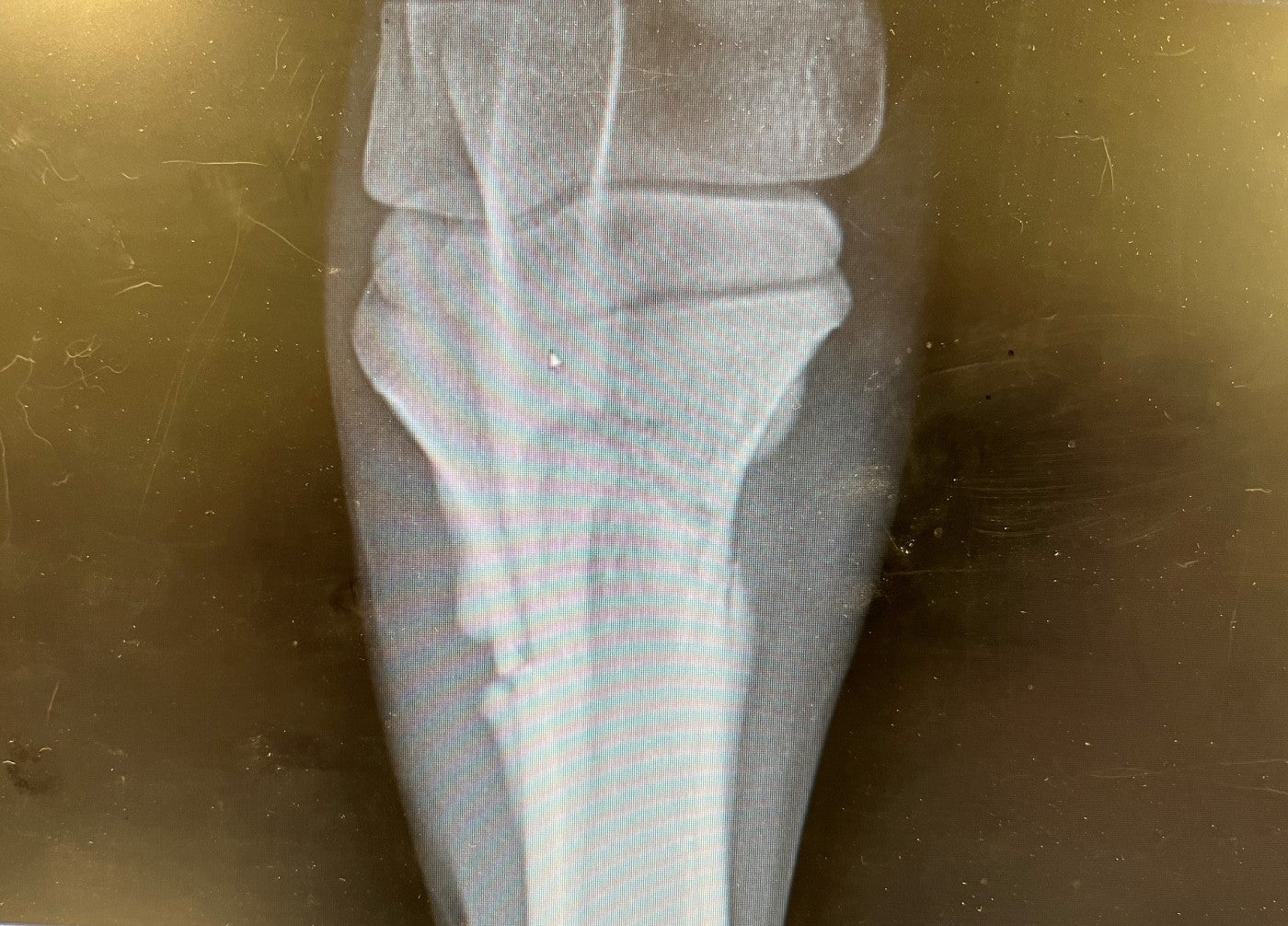A Lucky Break: How One Przewalski's Horse Filly Beat the Odds

Jumping and kicking in a grassy pasture at the Smithsonian’s National Zoo and Conservation Biology Institute’s 3,200-acre campus in Front Royal, Virginia, one would never guess this 12-week-old Przewalski’s horse suffered one of the most detrimental injuries a horse could face.
While the National Zoo houses two Przewalski’s horses in Washington, D.C., animal care staff at the Zoo’s research facility in Front Royal tend to a herd of nearly a dozen across several large pastures. Keepers were thrilled when one of the mares gave birth to a healthy filly in late May.
But a few days after her birth, animal keepers noticed the filly had begun to walk with a limp. A radiograph revealed a fracture running horizontally through her foreleg. Broken limbs are difficult to treat in horses without causing additional complications, and often result in humane euthanasia. Keepers even held off naming the filly, as they weren’t sure of her survival.
Przewalski’s horses, also known as “takhi” in Mongolian, are a species of critically endangered wild horse native to Central Asia. Distant relatives of the domestic horse, Przewalski’s horses are the last truly wild horse in the world. Although they once roamed the vast Eurasian steppe, or grassland plain, the species went extinct in the wild in the 1960s. Przewalski’s horses are stockier and hardier than their domestic cousins, a factor ungulate curator Dolores Reed believes may have been a saving grace for the filly.
With fewer than 2,000 Przewalski’s horses in the world, every birth is important. Conservation programs are integral to the species’ survival and have led to successful reintroduction of the species to Mongolia. If there were any way for keepers to prevent the filly’s euthanasia, it would be worth it.
Initially, the veterinary team believed the filly might have injured her carpus, a complex joint in the front leg, said Dr. Kristina Delaski, a veterinary medical officer at the National Zoo. Her team turned to outside specialists experienced with equine orthopedics.
Radiographs showed the filly had broken her radius bone on her front right leg, the long bone below a horse’s elbow. But the veterinary staff were surprised by what else the radiograph revealed.
“She had already begun forming a bony callus, which was excellent because that is the body’s way of stabilizing the fracture,” Delaski said. “It’s also surprising because it was so fast compared to an adult animal. Her age definitely helped with that.”

“We weren’t sure how that leg was going heal. If you have an adult horse that’s really heavy bodied and they’re taking the weight off of the leg for a long time, it affects the other legs. They’ll start to break down, especially in the front because they can’t really get off it," Reed said. “But it worked because she was so little.”
Even after diagnosing and treating the injury, veterinarians cautioned the filly still needed close monitoring.
“There is a critical point in time between three to four weeks after a break, where the horses feel good and want to start running around,” Reed said. “But that’s when the callus is the weakest and hasn’t reached the full strength of the bone.”
“It was the first day of life. It was very critical.”
Although the fracture had healed, the filly wasn’t out of the woods yet. The broken leg was preceded by another challenge, one that keepers would need to monitor as they reintroduced her to the rest of the herd: her grandmother.
"At birth, her maternal grandmother stole the filly,” Reed explained. “The little one started to imprint on her grandmother, even to the point of trying to nurse from her. And grandma was letting her and pushing mom away.”
Without her mother’s milk, the filly’s odds of survival worsened.
“It was the first day of life. It was very critical,” Reed said.
Keepers interceded within 24 hours and placed the new mom and foal into a separate pasture to bond. It was there the fracture occurred.

Now healed, the herd’s youngest Przewalski’s horse was ready to rejoin the rest. Keepers watched closely as the filly initially ran to her grandmother but noticed the little one returned to her mother after a few minutes.
“She knows who mom is, and she might have an affinity for grandma because she did imprint on her, but it’s not the same as when she was younger.”
With the herd’s dynamics back to normal, Reed is optimistic the filly will continue to grow with no lasting issues.
“Now you can’t even tell that she ever broke anything. She runs, she spins, she kicks. She does everything she needs to do.”
The Smithsonian's animal care staff works diligently to care for endangered species and keep you connected to the Zoo. With your support, our conservation mission continues. If you can, please join us in this important work by making a donation today.
Related Species:



